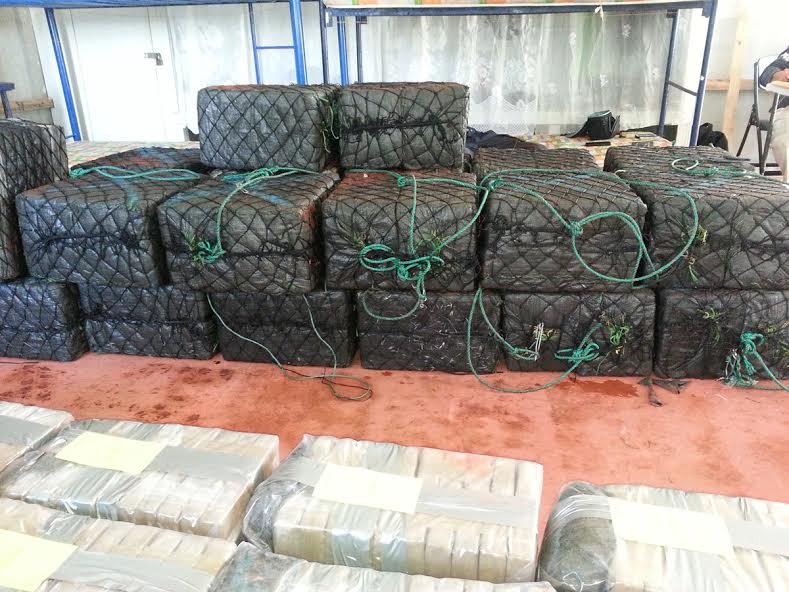Costa Rican police intercepted 810 kilograms of cocaine hidden in a banana shipment at the Moín Container Terminal in Limón headed for the United Kingdom. The Drug Control Police (PCD) carried out the seizure, marking the second major drug bust at the port that week.
The cocaine was concealed in banana boxes inside a container at the Moín terminal, a major export hub in Limón. Vice Minister of Public Security Manuel Jiménez said that advanced scanners detected the drugs.
The shipment initially cleared electronic checks but was flagged by a trained police dog, which led to the discovery of 810 packages of cocaine. The bust, valued at millions on the European market, highlights the ongoing fight against drug trafficking through Costa Rica’s ports.
The Moín terminal, a key hub for banana and pineapple exports, is a frequent target for international cartels moving cocaine to Europe and North America. Since 2019, European ports have seized 88 tons of cocaine from Costa Rica, showing the scale of the problem.
This seizure is part of Operation Soberanía, a 2023 initiative to tighten port security with scanners and international cooperation. The combination of technology and canine units has proven effective, though traffickers continue to exploit legitimate exports like bananas to hide drugs.
Security Minister Mario Zamora stressed the importance of global partnerships, noting that Costa Rican officers work with Spanish and Portuguese counterparts to track shipments. The operation follows recent seizures, including 120 kilograms of cocaine hidden in a truck at Moín and two tons intercepted off Limón’s coast. These efforts reflect Costa Rica’s push to disrupt trafficking networks, but challenges remain.
Limón faces growing violence, with 90% of homicides tied to organized crime, according to the Judicial Investigation Agency. The province’s role as a drug transit hub drives conflict, with a 38% homicide spike nationwide in 2023, largely centered in Limón. In May, Costa Rica passed a constitutional reform allowing the extradition of nationals involved in drug trafficking, spurred by rising crime. The reform aims to deter local involvement in cartels, but violence persists.
The bust underscores the sophistication of trafficking methods. Cartels often use legitimate businesses to mask operations, hiding drugs in containers with legal goods. In this case, the cocaine was tucked among banana boxes, a common tactic. Authorities are now investigating the exporting company and supply chain, though no arrests have been reported. The PCD’s success relied on profiling techniques, scanner technology, and canine alerts, showing the need for multiple layers of detection.
Costa Rica’s role as a transshipment point has grown, with 27 metric tons of cocaine seized in 2024, up 5.6 tons from 2023. The country’s Caribbean location makes it a prime target for cartels moving drugs from Colombia to Europe and the U.S.
Despite investments in port security, including U.S.-supported scanners and training, traffickers adapt quickly, using everything from speedboats to hidden container compartments. Occasional scanner malfunctions have also complicated efforts, but our government remains committed to strengthening defenses.




